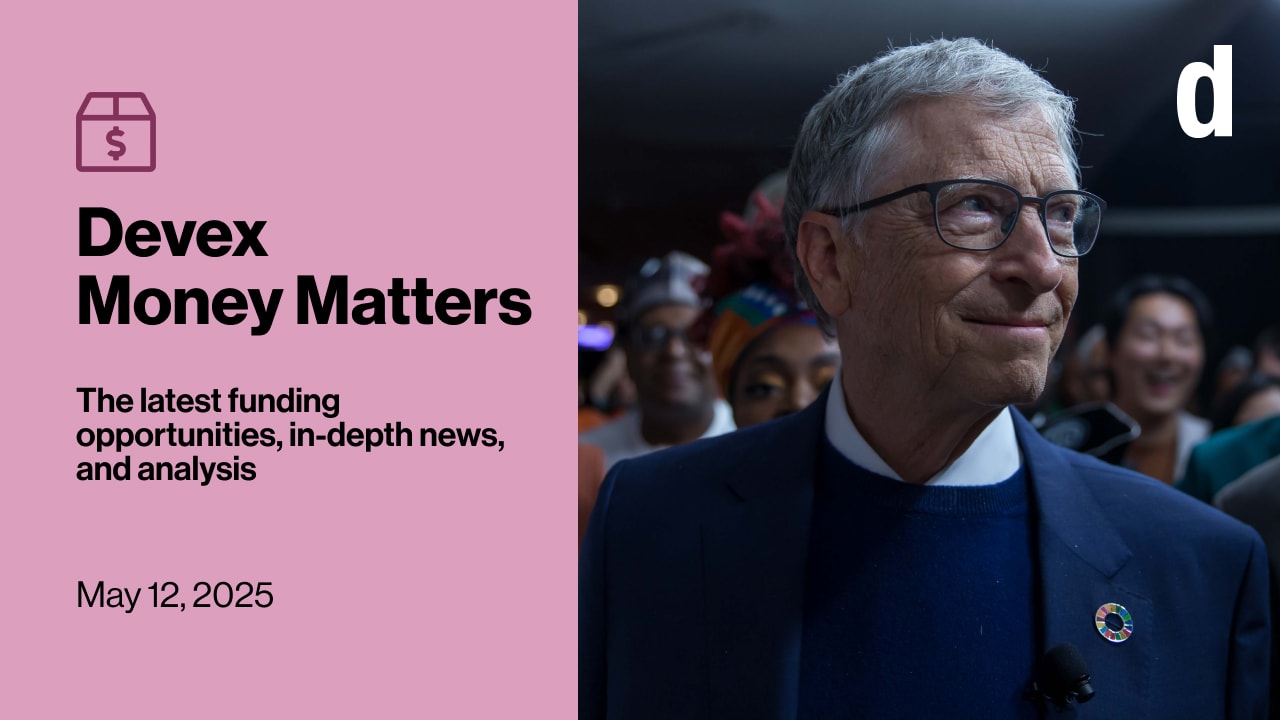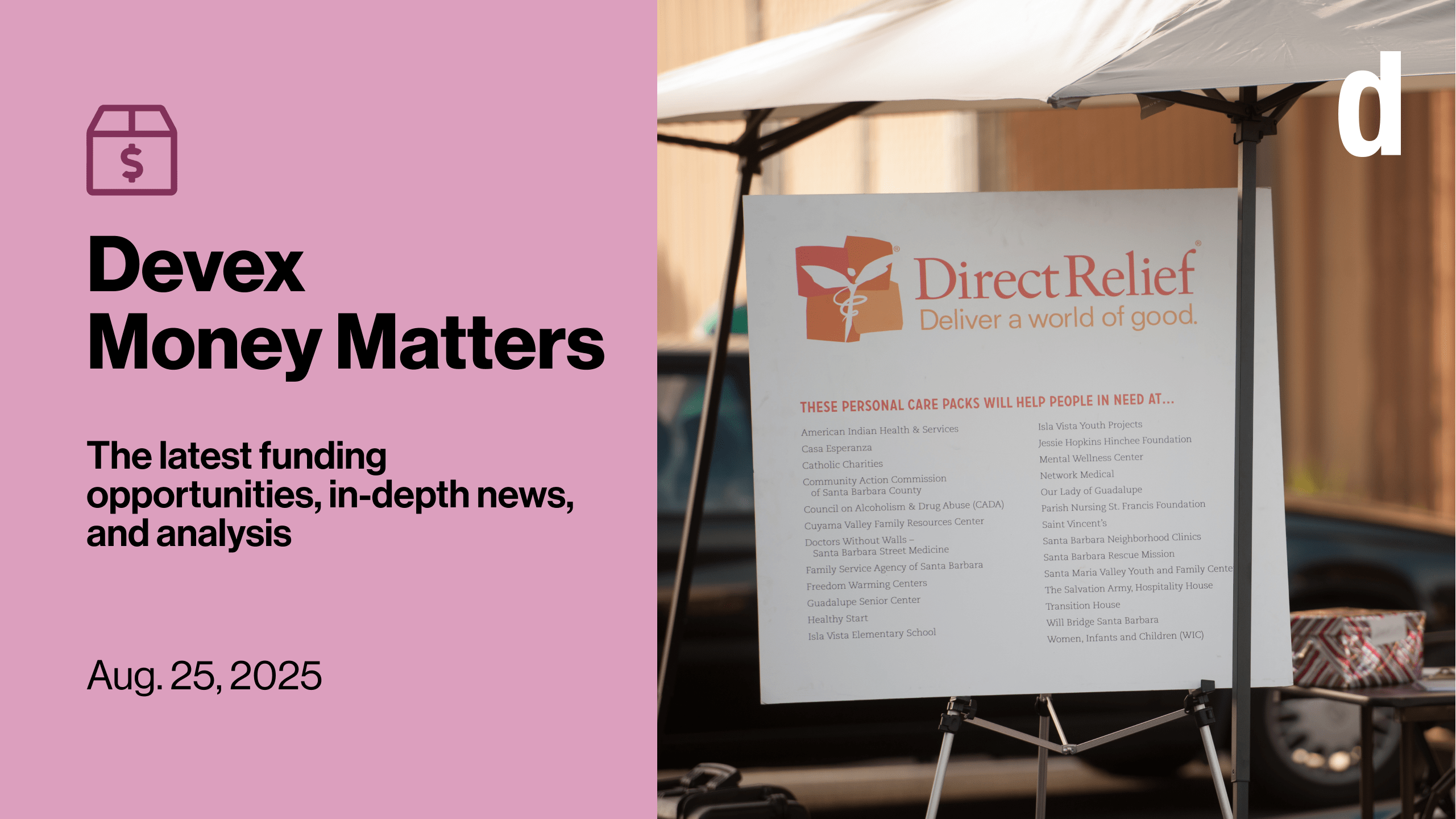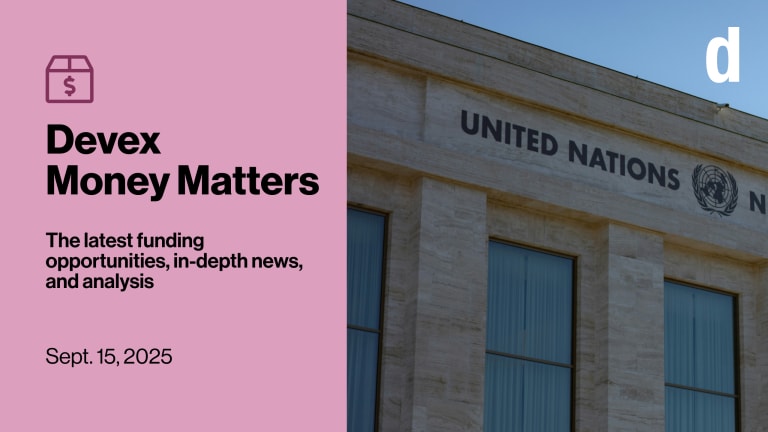
The World Bank spends billions of dollars each year all over the world. But what does it spend it on? Who wins the business? And where are they from? We delved into the data to answer these questions. Keep reading for that.
I’m also excited to announce the launch of Pro Week 2024 today. This week will be jam-packed with incisive content ranging from deep discussions about the future of INGOs to key questions around localization, and of course, the topic we’re all about here at Money Matters: funding. There are also exclusive events — including one tomorrow looking at the future of AI in the development sector — and special reports exploring INGO income and ODA recipients.
Having a Devex Pro membership supports the journalism we’re able to bring to you every day, so now’s a great time to join if you haven’t already. To enjoy all this week’s content sign up now with $100 off in celebration of Pro Week.
+ Are there topics you want to read more about in Money Matters? We want your feedback.
Bank accounts
The World Bank awarded 26,000 contracts, worth $14.7 billion, in the fiscal year to June 2024. But who won the business? My colleague Miguel Antonio Tamonan looked at the 10 largest contractors.
As has been the case in previous years, Chinese companies dominated, with by far the largest total amount of business, and three slots in the top 10.
Construction contracts also came out on top, although two of the largest awards went to U.N. agencies for relief work.
Read: The World Bank's top 10 contractors in 2024 (Pro)
Funding activity
We publish tenders, grants, and other funding announcements on our Funding Platform. Here are some of the ones which have been viewed the most in the past 10 days.
Open Society Foundations has announced a $400 million commitment to support green economic policies in the global south.
The European Investment Bank has announced a €400 million (about $435 million) loan to improve water security and sustainability in Jordan.
The Asian Development Bank has approved a $100 million loan to improve health care for pregnant women and newborns by upgrading facilities, training staff, and creating electronic patient records in Uzbekistan.
The Green Climate Fund approved a $52.3 million project to support Malawi in adapting to climate change and improve food security.
USAID will provide $3.5 million funding to improve disaster preparedness by training local governments and pre-position relief commodities for immediate distribution when disasters strike in Papua New Guinea.
+ Try out Devex Pro Funding today with a free five-day trial, and explore funding opportunities from over 850+ sources in addition to our analysis and news content.
Aid for AIDS
The story of the battle against AIDS is in many ways one of success. New diagnoses peaked in 2014, and have since been falling. Treatments have become better and better.
But the worry is that funders are bowing out too early, and pulling their backing before the job is done. In the U.S. there are reports that there’ll be cuts to the U.S. President’s Emergency Plan for AIDS Relief, or PEPFAR, next year, and warnings that waning political will could hurt the fight against the disease.
If HIV services stagnated at 2020 levels, it would cost 17.7 million lives, according to estimates from UNAIDS.
Read: PEPFAR chief warns waning political will could hurt AIDS fight (Pro)
Seeing it through
The world’s most transparent donor remains the African Development Bank, according to the 2024 Aid Transparency Index, published last week by Publish What You Fund.
The report found that the world’s donors are growing more transparent, at least in their reporting to the International Aid Transparency Initiative. The initiative records information on a project-by-project basis, allowing scrutiny of how aid works on a much more granular level than information gathered by OECD.
Read: The world’s donors are more transparent than before, new index shows (Pro)
Cloudy outlook for climate fund
The loss and damage fund has had a relatively uneven start to its life. After being agreed with plenty of publicity at the 27th COP climate conference, it’s seen relatively little funding, it still doesn’t have a leader, and it’s had to fight hard to even keep “loss and damage” in its name.
It succeeded, and it’s now officially called the Fund for Responding to Loss and Damage, despite objections from donors, primarily the United States, which wanted a more politically acceptable title.
Tais Gadea Lara, writing for Devex, looks at the areas in which the fund has made progress — and those it hasn’t.
Read: New climate fund makes progress on a leader, but not on scale (Pro)
Interested in more business and funding coverage? Explore our business overview page. If you're a Pro subscriber, you can set up news alerts for funding articles. We suggest selecting "Funding" as the topic, along with keywords (e.g. USAID). Not a Pro subscriber yet? Try a 15-day Pro trial.
Sign up to Money Matters for an inside look at the biggest stories in development funding.








